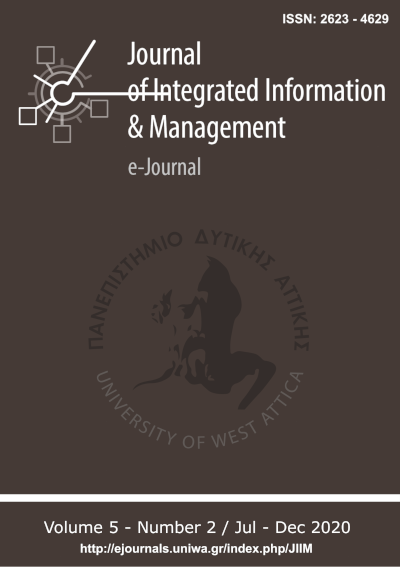Computer-Assisted Translation of Egyptian-Coptic into Greek

Abstract
Purpose - The Coptic language is the final evolutionary stage of Ancient Egyptian, firstly attested in the 1st century CE (Old Coptic) until the 16th century CE, which survives nowadays as the liturgical language of the Coptic Orthodox Church. Egyptian-Coptic had been transliterated through the alphabetization of written Egyptian, based on the Greek script. In this work, the designing of a software tool is presented, for the computer-assisted learning and translation of Egyptian-Coptic into Greek.
Design/methodology/approach - The software design herein emphasizes the ability of processing inscriptions on artifacts through a simple interactive interface for its usage by Greek- speaking scholars of Humanities, having just essential familiarization with computers. For this purpose, a model of processing has been selected, based on an existing software tool for other ancient languages, which is being currently modified for processing Coptic scripts.
Findings - Especially in Greece, several museums and institutions preserve known manuscripts and artifacts of this language and art. Besides the large number of Coptic corpora (gospels and scriptures), a significant and historically important part of texts is found on Coptic artifacts, being difficult to be automatically processed, especially in a Greek context. Considering the above issues, it had been decided in the research project to implement a semi- automated approach, which will allow the user to choose the processed unit, whether this will be smaller, equal or larger than word, following a word-by-word computer-assisted translation into Greek.
Originality/value - Considering the cultural importance of Coptic, they create a continuous of almost 5000 years of written sources in Egyptian language, with an undisputable value in the diachronic history of languages, and prove the unsurpassed cultural relationship between the Ancient Greek and Egyptian civilizations. Therefore, the development of the presented software application aims at further facilitating the Greek-speaking researchers and scholars of Coptic.
Article Details
- How to Cite
-
Kontogianni, A., Ganetsos, T., Kousoulis, P., & Papakitsos, E. (2024). Computer-Assisted Translation of Egyptian-Coptic into Greek. Journal of Integrated Information Management, 5(2), 26–31. Retrieved from https://ejournals.epublishing.ekt.gr/index.php/jiim/article/view/37885
- Section
- Research Articles

This work is licensed under a Creative Commons Attribution-NonCommercial 4.0 International License.
Copyright Notice
Authors who publish with JIIM agree to the following terms:
- Authors retain copyright and grant the journal right of first publication with the work simultaneously licensed under a Creative Commons Attribution Non-Commercial License that allows others to share the work with:
- An acknowledgment of the work's authorship and initial publication in this journal.
- Authors are permitted and encouraged to post their work online (preferably in institutional repositories or on their website) prior to and during the submission process, as it can lead to productive exchanges, as well as earlier and greater citation of published work.





